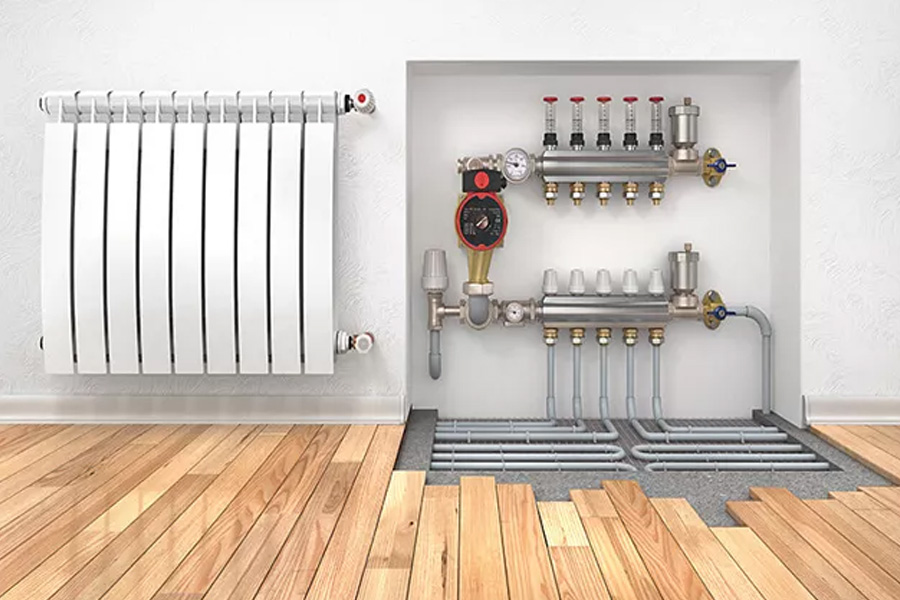
Electric vs. Water Underfloor Heating: Which Is More Energy-Efficient?
Electric underfloor heating systems rely on electricity, which’s often pricier than gas or other heating sources. The energy usage of a system can vary depending on factors like building insulation, system efficiency and temperature settings. Although electric systems are efficient at converting electricity to heat the higher cost of electricity can make them more expensive to run.
When it comes to control and zoning electric systems provide control options and zoning capabilities that enable homeowners to heat specific areas or rooms as needed. This targeted approach to heating can result in energy savings by avoiding the need to heat spaces. Utilizing thermostats and smart home integration can further improve efficiency by optimizing heating schedules based on usage patterns.
In terms of heat up time electric systems generally reach the desired temperature faster than water based systems do. This means that the desired warmth can be achieved promptly reducing the necessity, for heating periods and potentially conserving energy.
Water underfloor heating systems, also referred to as systems operate by circulating heated water through a network of pipes installed beneath the floor.
These setups are linked to a boiler, a heat pump or a solar thermal system. The warmed water heats the floor, which then releases heat into the room. Here are the main factors that impact how water underfloor heating works;
Installation and Upfront Expenses
Water based systems are more intricate and expensive to set up compared to systems. Setting up involves laying down a network of pipes which requires work and expertise. Additionally you’ll need a boiler or another heat source, which adds to the cost. However in the term these systems can be more economical due to lower operating expenses.
Energy Usage
Water underfloor heating systems can be more energy efficient, than ones especially when combined with energy efficient heat sources like condensing boilers, heat pumps, or solar thermal systems. These systems can function at temperatures while still offering cozy warmth resulting in significant energy savings. Using energy sources can further boost the efficiency and sustainability of hydronic systems.
Regulation and Zoning
Like systems water based setups can be divided into zones to warm specific areas or rooms. Sophisticated control systems and thermostats offer temperature control optimizing energy usage. Yet the intricacies of water based systems can pose challenges when it comes to zoning compared to systems.
Heat Up Thermal Mass
Water underfloor heating systems take longer to heat up due to the mass of water and flooring materials. Nonetheless this delay can be beneficial, in insulated structures as it allows for consistent heat retention resulting in stable temperatures and reduced heating cycles. This thermal mass effect contributes to energy conservation.
In areas with electricity water based heating setups might provide enhanced energy efficiency and cost effectiveness.
Usage Patterns
The specific heating requirements and usage habits of the occupants in a building can impact how efficient the heating system is. Buildings with fluctuating occupancy or rooms that are seldom used may gain more from the individual control capabilities of systems.
System Design and Maintenance
The design and upkeep of a heating system can influence its energy efficiency. Proper setup, upkeep and using top notch components are vital, for maximizing the performance and efficiency of both electric and water based systems.
When deciding between water underfloor heating systems the final choice is influenced by various factors, like the level of building insulation, energy expenses, how the system will be used and financial constraints. Homeowners and construction professionals aiming to enhance energy efficiency should carefully assess these aspects to select the appropriate underfloor heating solution tailored to their requirements.

